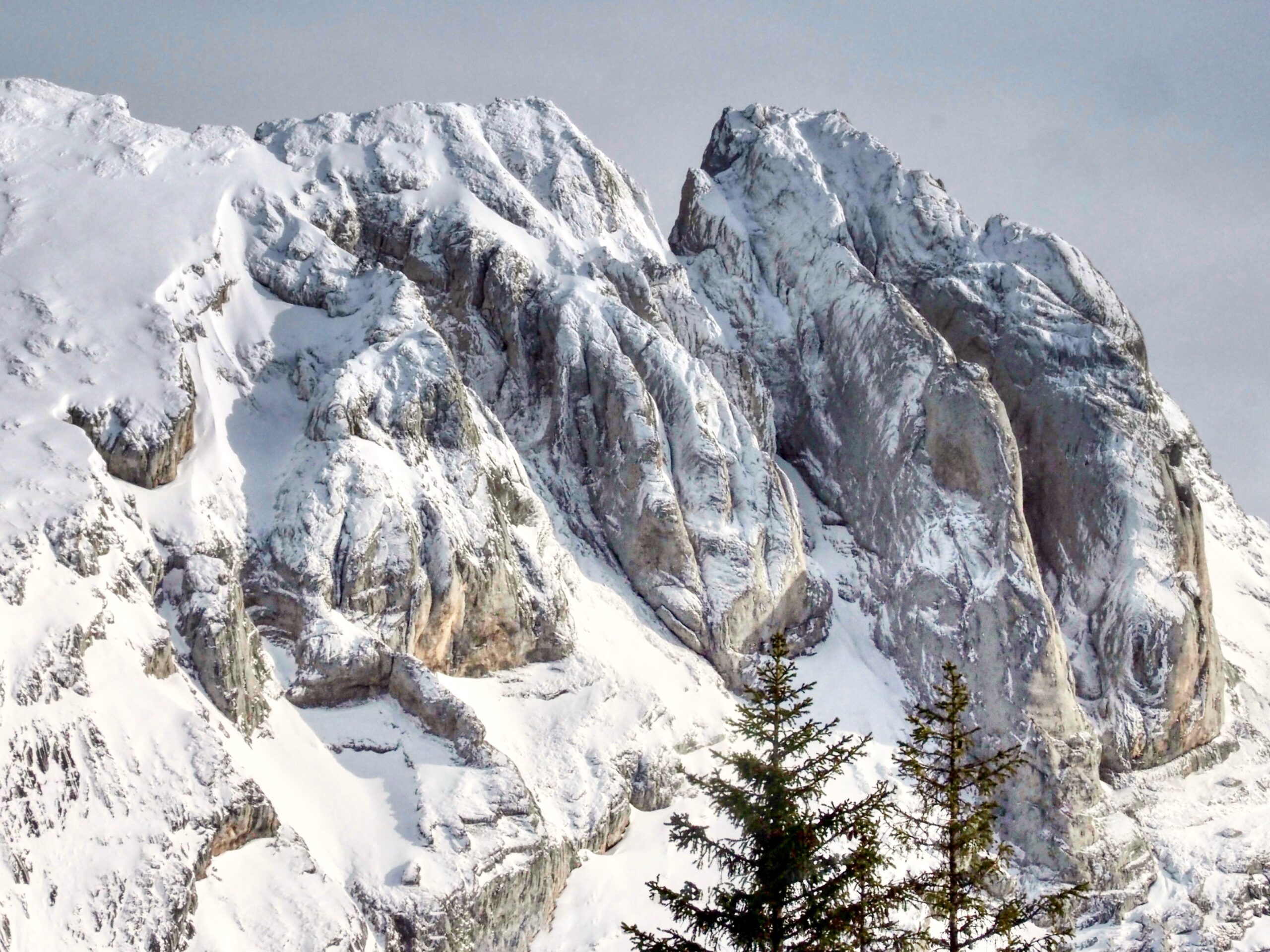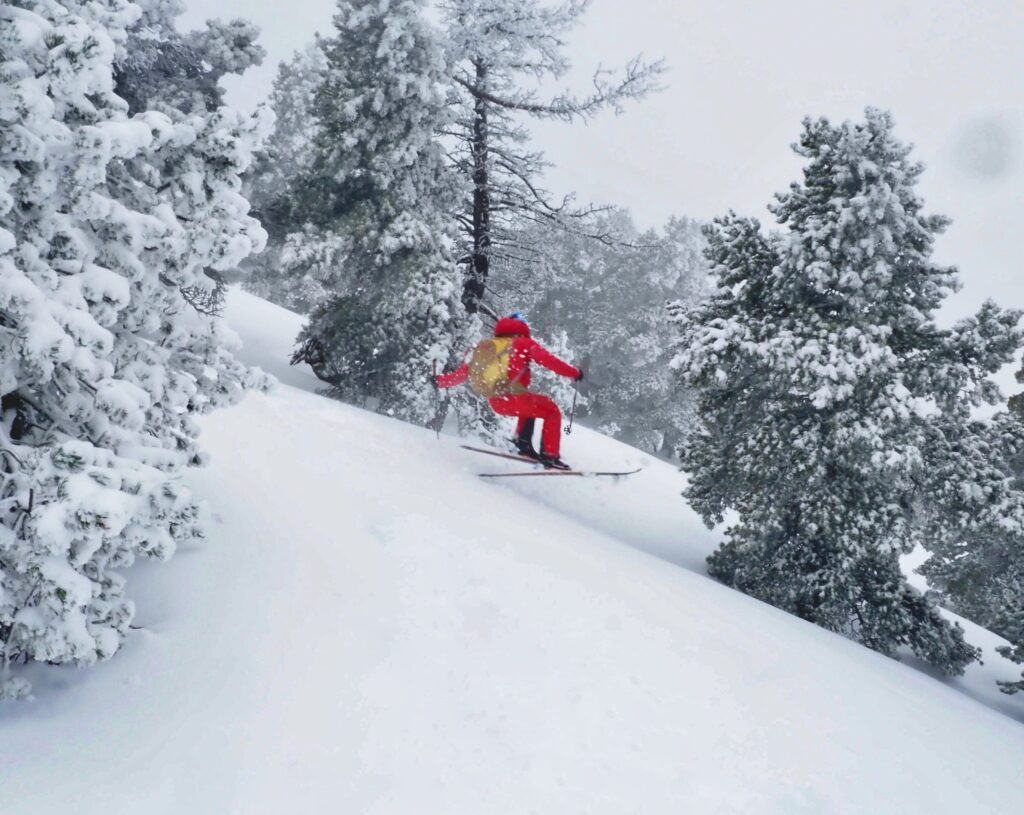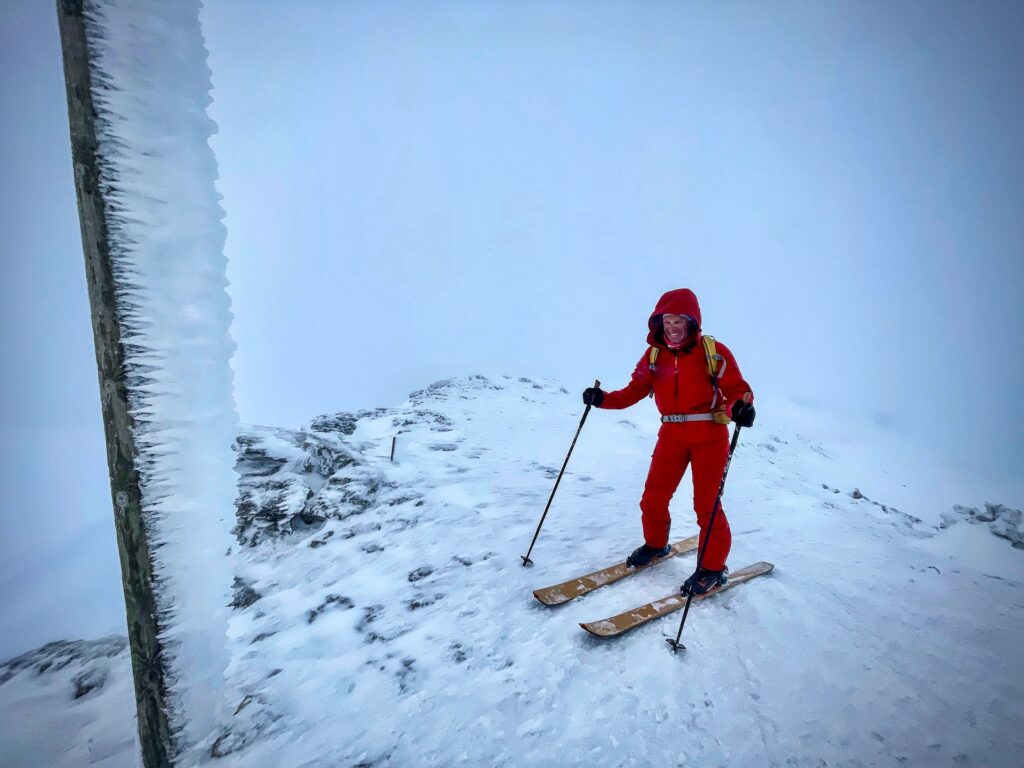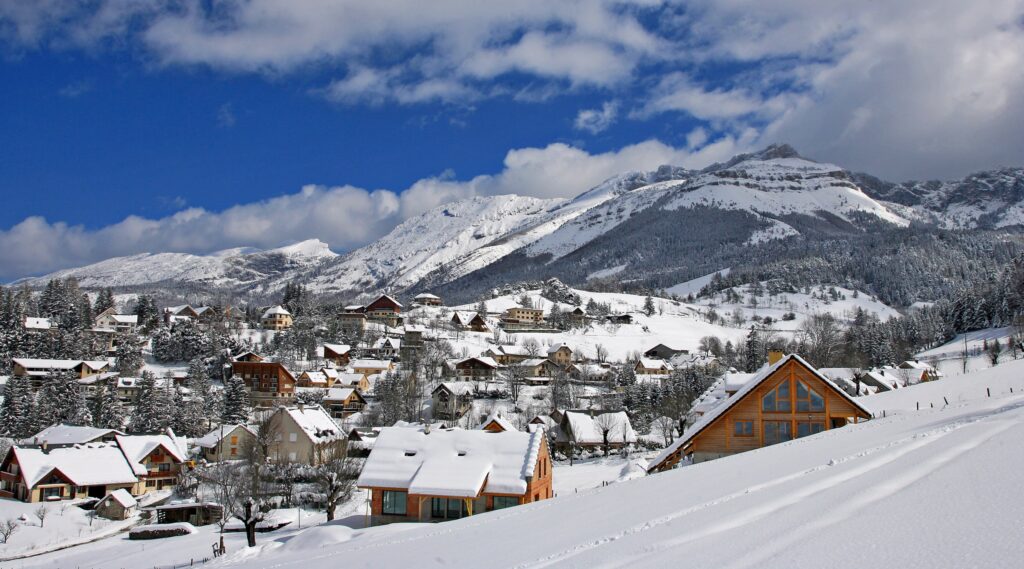Villard-Corrençon – Hidden France
Authentically French, traditional, great value and with plenty of varied terrain, the Vercors Massif proves a hit


The mercury has dropped below zero and the wind is whipping my skins up around my shoulders as I roll and wrestle them into my pack. Somewhere below in the cloud is a black run I’ve can’t see and am about to ski for the first time. Better switch on.
I hadn’t expected quite such an extreme start to my weekend in this sleepy corner of the Vercors Massif. The Ver-what, you ask? Exactly.
Flying into Geneva, Lyons or Grenoble for a winter holiday, the chances are you’re heading to the Alps. But within easy distance of those same airports are some great ski resorts that, while not in the Alps, are very popular with French and weekend skiers in-the-know. In part this may be precisely because they aren’t ‘the Alps’, with all the crowds and costs that goes with it – but also because they really do offer plenty of great skiing (and some very fine scenery, too).
I flew into Grenoble, then headed 35km south-west to the Vercors massif, a spectacular limestone cliff-edged plateau running north-south for 60 miles with peaks over 2,000m. Within the department of Isère in the French Prealps, itself a region with 23 ski resorts, the Vercors’ uniquely challenging geology is central to its history – it was a centre of French resistance in WWII – but also to its reputation as a centre for outdoor sports, especially in winter.
My base for the weekend was Villard de Lans, the main ski village in the northern half of the Vercors, connected by lift (and road) to Corrençon-en-Vercors, five kilometres to the south.
From the hotel, to the ski hire shop, to the first two-man chairlift: the atmosphere in Corrençon-en-Vercors is a world away from the busy, upmarket Three Valleys et al. Despite the damp and cloudy morning, there was an unhurried, easygoing vibe among the French families gathering with small children at the beginner park in the village (1,111m). The Villard-Corrençon ski area has 125km of piste, 19 lifts and absolutely no chance of ever having a Folie Douce.
Only two people stood in line at the T-bar up to the Clos de Balme (1,220m), where skiers then ride as high as 2,050m on the Belvedere chair. I had met up with Seb, a mountain guide riding his homemade wooden skis (Vertaco skis), a super-light set-up with Plum bindings and wire leash. We took a lift into the mist to try a little touring, but the warm temperatures had left the snow heavy off-piste. “No problem when we go high,” confirmed Seb, in the cheery way of all guides.


As we skinned up the deserted un-groomed Narcisse piste to the Refuge du Grand Couloir, the wind hit us, rocketing over the lip of the huge Vercors escarpment, the cliff face dropping away 2,000ft through the clouds, the usually visible shark fin of La Grave’s La Meije peak somewhere 50kms due east.
Rime ice had grown a couple of inches down the north easterly side of a pylon to emphasise that while it was cold up here, it was also blowing a serious breeze. Tough conditions for folding away skins, let alone skiing what looks like will be an interesting descent.
Sure enough, as we wend our way between larch glades, down the snowfields of the Choucas black run off the side of the Belvedere chairlift, the wind chill has topped the deep wet snow with a delightfully breakable crust, like some fiendish Baked Alaska. Progress is slow, even for Seb as he tries to dance his way, light as a feather, across the top of the snow.
But this is why we love ski touring, and over steak and locally brewed beer in the steamy Pomme Du Pin restaurant back in Corrençon, our intense experience soon morphs into having been ‘character-building’.
Next day, the sun is shining and the terrain looks beautiful. Limestone cliffs drop in faltering steps down the north side of the Grand Moucherolle (2,285m), high enough to be still dusted in rime ice.
Having established that heading off-piste is unwise, it’s time to strap on some heavily side-cut GS skis and hammer the groomers, but I still envy a couple of ski tourers I see threading their way down a ‘mini-golf’ snowfield above the Lac de la Moucherolle.
The centre of the Villard ski area is 100m uphill from Villard de Lans village and has a more purpose-built feel to it, compared with Corrençon-en-Vercors. Not the prettiest, but practical for French weekend skiers, and cheap.
We speed over to Corrençon, cruising some blues and stopping atop the TSD Crêtes chair (2,029m) to take in the stunning view of the Vercors massif stretching away either side of us for nearly 20 miles in each direction.
I ask Seb if there’s any hut-to-hut ski touring. The answer is no, thanks to the porous and fractured limestone ‘karst’ nature of the massif’s geology. There are no natural water sources on the plateau because it’s riddled with sinkholes, caves and ways for water to drain away. It means day-touring is about the limit of what’s sensible up here.
In better conditions, the terrain offers up great powder runs, but on-piste we find some more blacks to get our teeth into, including the Carole Montillet run to the bottom of the Villard ski area – a fine leg-burner to finish on.
The restaurants are unpretentious, as are the wines, and there’s an all-pervasive friendly atmosphere, from the town square to the late-night bars, which, while harder to find than in Alpine ski resorts perhaps, are populated more by locals rather than tourists, and better for it.
Determined to try out all that Villard has to offer in winter, we find ourselves at the Zecamp Sports Centre, outside Villard de Lans. Run by legendary husband and wife team Loïs and Marin Dorin-Habert, former Olympic medal winners in the sport of biathlon.
Zecamp is a biathlon training centre and hotel, without a deep-fat fryer in the kitchen, I suspect. Whippet-thin guests sit plotting their next training ski along the 110kms of cross-country tracks but luckily, with it being after lunch, we’re spared the 7.5km sprint circuit and head instead for the rifle range.
I confess to being a proper Biathlon fan. It’s about the only sport where most competitors genuinely collapse crossing the finish line. They ski in to the rifle range with heart racing like a gerbil on speed, hoping to control their breathing enough to hit a target 45mm across, at a range of 50m. It’s beautiful, masochistic madness.
At 10m, even with a very small target, I fail to miss a single shot. Lois is impressed, or so he tells me. Chest-puffed, I visit a goats’ cheese farm and relay my success to the stabled contingent.

At night, Villard de Lans has the air more of a typical French provincial village, but with slightly more local delicacy and gift shops. But as most customers are French, the produce is good quality and no rip-off. The restaurants are unpretentious, as are the wines, and there’s an all-pervasive friendly atmosphere, from the town square to the late-night bars, which, while harder to find than in Alpine ski resorts perhaps, are populated more by locals rather than tourists, and better for it.
Authentically French, traditional, great value and with plenty of varied terrain to go at – Villard-Corrençon, you’ve won me over.
Return train travel from London St Pancras to Grenoble costs from £124 (trainline). Then hop on a bus to Villlards de Lans (transaltitude.fr) from £12 return. Alternatively, return flights from London Heathrow to Lyon costs from £70 with BA. A seven-night stay at Hotel Le Christiania in Villard de Lans costs from £413pp, B&B (two sharing). A one-day Villard-Corrençon lift pass costs £33.
For more info visit Villard de Lans and Isère Tourism websites.
LES BAUGES Also part of the French Prealps, the Bauges massif lies further north and west of Vercors, in the Auvergne-Rhône-Alpes, between Annecy and Chambery. It’s a huge nature reserve and has few inhabitants or tourists which makes it perfect for ski touring. The Bauges massif tops out at 2217m, and the itineraries can be difficult, so you’ll need to be a competent ski tourer.
To hire a guide, contact the Office de Tourisme des Aillons-Margériaz or Terres d’Altitude
PAYS DE GEX Known affectionately as Le Genevois Français, the Pay des Gex region is further north of Les Bauges and Vercors, running from the long spine of the Jura Mountains to the west, to the shores of Lake Geneva (it’s just 20 minutes from Geneva airport). There are three modest, but decent ski areas: Lélex-Crozet, Mijoux-La Faucille and Mentières, at altitudes between 900-1,680m. More realistically, it could be the perfect weekend or even half-day adventure should you be in Geneva and can’t make the trip into the Alps – see Pays de Gex